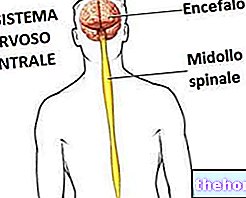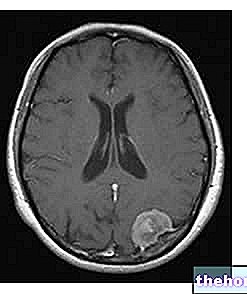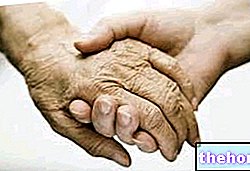Generality
Bell's palsy is a facial palsy caused by a 7th cranial nerve dysfunction. The condition results in muscle weakness or paralysis in one side of the face.
The causes of Bell's palsy are not always known, but most cases result from "inflammation of the facial nerve, possibly related to a" viral infection.

Causes
Bell's palsy results from "inflammation or compression of the 7th cranial nerve. The exact cause is not always clear, but the condition is often related to a" viral infection. When a virus infects the body, it can cause inflammation of the facial nerve, which controls the facial muscles on one side of the face. As a reaction, the inflammatory process can cause swelling along the course of the nerve fibers and ischemia. In some cases, damage limited to the myelin sheath alone may occur. Viruses that have been linked to Bell's palsy include: Herpes simplex, Herpes zoster (which causes chickenpox and St. Anthony's fire) and Epstein-Barr virus (mononucleosis).
Other conditions that can cause Bell's palsy include:
- Flu or cold
- HIV infection;
- Lyme disease;
- Hand-foot-mouth disease;
- Rubella;
- Chronic middle ear infections;
- Hypertension;
- Diabetes;
- Tumors (for example, of the parotid gland and brain);
- Sarcoidosis;
- Trauma, such as skull fracture and facial injuries.
Bell's palsy can affect anyone, but it occurs mostly in people aged 15 to 60 and is most common among people with diabetes and pregnant women, especially during the third trimester of gestation, or in the first week after childbirth.
For further information: Bell's Palsy - Causes and Symptoms
Symptoms
Bell's palsy is characterized by weakening or paralysis of the facial muscles on one side of the face. In rare cases, the disorder affects both sides of the face. Bell's palsy symptoms develop rapidly and reach their peak within 48 hours, leading to significant facial distortion. The extent of the condition can range from mild facial numbness to total paralysis.
Symptoms of Bell's palsy can include:
- Numbness, mild weakness, or complete paralysis of one side of the face;
- Lowering of the eyelid and corner of the mouth, difficulty making facial expressions, eating or drinking, smiling or closing the eye on the affected part;
- Sialorrhea (excessive saliva production);
- Ectropion (the lower eyelid can turn outwards);
- Pain in or behind the ear and hypersensitivity to sound;
- Pain around the jaw
- Irritation of the affected eye, with excessive watery eyes or dry eyes;
- Dizziness, headache, or neck pain
- Speech disturbances;
- Altered or reduced sense of taste.
In most cases, symptoms begin to improve within two to three weeks.
Bell's palsy is not the result of a stroke or transient ischemic attack (TIA). If a bilateral form of facial paralysis occurs or if any other part of the body is paralyzed, weak or numb, it is important that the condition be evaluated by the doctor, to rule out other possible causes.
Complications
Possible complications of Bell's palsy can include:
- Corneal ulcer (due to excessive dryness of the eye or abrasion of the cornea);
- Irreversible damage to the facial nerve;
- Involuntary twitching or spasms in the muscles of the face (synkinesia).
Diagnosis
Diagnosis is made on the basis of clinical presentation, including a distorted facial appearance and an inability to move muscles in the affected area, and requires exclusion of other possible causes of facial paralysis. Generally, a doctor examines the individual for symptoms of upper and lower facial paralysis. In many cases, this weakness is confined to one side of the face and is occasionally isolated to the forehead, eyelid, or mouth. Blood tests may be useful in diagnosing other concomitant health problems, such as diabetes and certain types of infections. Sarcoidosis and Lyme disease tend to cause various other clinical signs in addition to facial paralysis. The diagnostic path may include magnetic resonance imaging (MRI ) or a computed tomography (CT) of the face, necessary to investigate any structural causes responsible for pressure on the facial nerve, such as a tumor or a fracture of the skull. Electromyography (EMG) can confirm the presence of nerve lesions and, in case affirmative, determine the severity and extent of VII cranial nerve involvement. EMG measures the electrical activity of a muscle in response to stimulation and the conduction rate of electrical impulses along the course of a nerve fiber.
Treatment
Bell's palsy affects each individual differently. Some cases are mild and do not require treatment; for others, therapy may include medications and other options to speed recovery. If an obvious cause is found, such as in the case of an infection, direct treatment can be helpful.
Drugs commonly used to treat Bell's palsy include:
- Corticosteroids, such as prednisone, used to reduce inflammation and swelling, are effective in managing Bell's palsy. Some doctors may recommend early treatment (within 72 hours of symptom onset) to improve the chance of a full recovery.
- Antiviral drugs, such as aciclovir or valaciclovir, used to fight herpes viral infections, can stop the progression of the viral infection and shorten the course of the disease.
- Pain can be treated with analgesics, such as aspirin, acetaminophen, and ibuprofen.
For further information: Medicines for the Treatment of Facial Paralysis
Another important factor in the treatment is eye protection. Bell's palsy can disrupt the natural ability to blink, leaving the eye exposed to irritation. Therefore, it is important to keep the eye moist and protect it from injury. The most common treatment includes the instillation of lubricating eye drops or artificial tears during the day and the application of an ointment before bedtime. The eye can be protected with goggles or a patch if it is not possible to completely close the eyelids.
Physical therapy, to stimulate the 7th cranial nerve and help maintain muscle tone, may be helpful for some patients. Massage and some exercises can help prevent permanent contractures of paralyzed muscles. Moist heat applied to the affected side of the face several times a day can help reduce pain.
In general, decompression surgery, applied to relieve pressure on the nerve, is controversial and is rarely recommended for Bell's palsy. On rare occasions, cosmetic surgery may be needed to correct some permanent damage, such as an ectropion or deformation of the mouth.
The prognosis for patients with Bell's palsy is generally very good. The severity of the damage to the 7th cranial nerve determines the extent of recovery. With or without treatment, most people begin to improve within 2 weeks after the initial onset of symptoms and recover completely, regaining normal function, by 3-6 months. For some, however, the symptoms may last longer or never completely go away. In rare cases, Bell's palsy can recur on the same or opposite side of the face.























-nelle-carni-di-maiale.jpg)




